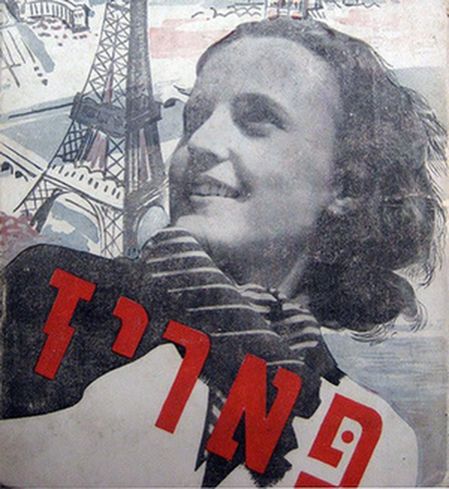ABSTRACT
The paper seeks to expand the area of modern Yiddish culture beyond literary fiction. It explores the rise of modern Yiddish theatre, press, poetry, and political literature in Imperial Russia in the 1880s. The essay argues that these forms of Yiddish cultural expression first became significant and widespread phenomena in the 1880s. It also highlights the emergence of a diverse Yiddish readership and audience, with different levels of Jewish and European cultural background, in order to counter the common dichotomy that Yiddish was for the masses, whereas Hebrew and Russian were used by the Jewish elites. Finally, the article places the rise of Modern Yiddish culture within the context of major social and economic transformations in East European Jewry: urbanization, population growth, and downward economic mobility. Overall, the article refines and revises certain conclusions offered in the author’s book The Rise of Modern Yiddish Culture (2005).
Tag: Yiddish
ABSTRACT
As the first prominent Yiddish writer from the Polish territories of the Pale of Settlement, I. L. Peretz (1852-1915) was from the beginning of his career an outlier in the geographical politics of Yiddish culture. He dramatized this difference in a number of ways: insisting on the linguistic difference of his Yiddish from that of his colleagues, dispensing with the overt appeals to oral discourse which Yiddish literature had adopted and adapted from Russian literary models, and demanding of himself and his readers a sensitivity to literary style on the highest level of sophistication. As an outlier, these aesthetic differences find representation in analogously exceptional approaches to the question of literary space. Unlike his primary colleagues, and competitors, in Yiddish literature of the day – Sh. Y. Abramovitsh (c. 1835-1917) and Sholem Aleichem (1859-1916) – Peretz dispenses with the convention of creating prototypical, imaginary shtetlekh in order to situate his stories, including his most fantastic and parodic narratives, in a verifiable Eastern European geography. He is moreover the first great Yiddish writer to describe these traditional communities from a perspective of the writer living in a modern metropolis, even if the metropolis itself figures in comparatively few of his narratives. What emerges from these strategies is a writer who situates himself not only as an “outlier” with respect to the linguistic and literary conventions of his contemporaries, but also with respect to the territories he describes. His narratives are neither traditional nor modern, neither metropolitan nor peripheral, neither realistic nor phantasmagoric, but in each instance somewhere in between and, more significantly, constantly in a state of flux among these contrasting locations. This essay will trace the narrational techniques and representations of space in Peretz’s fiction to demonstrate the dislocations which determine his best writing and provide a model for the leading trends in Yiddish modernism that follow in his wake.

